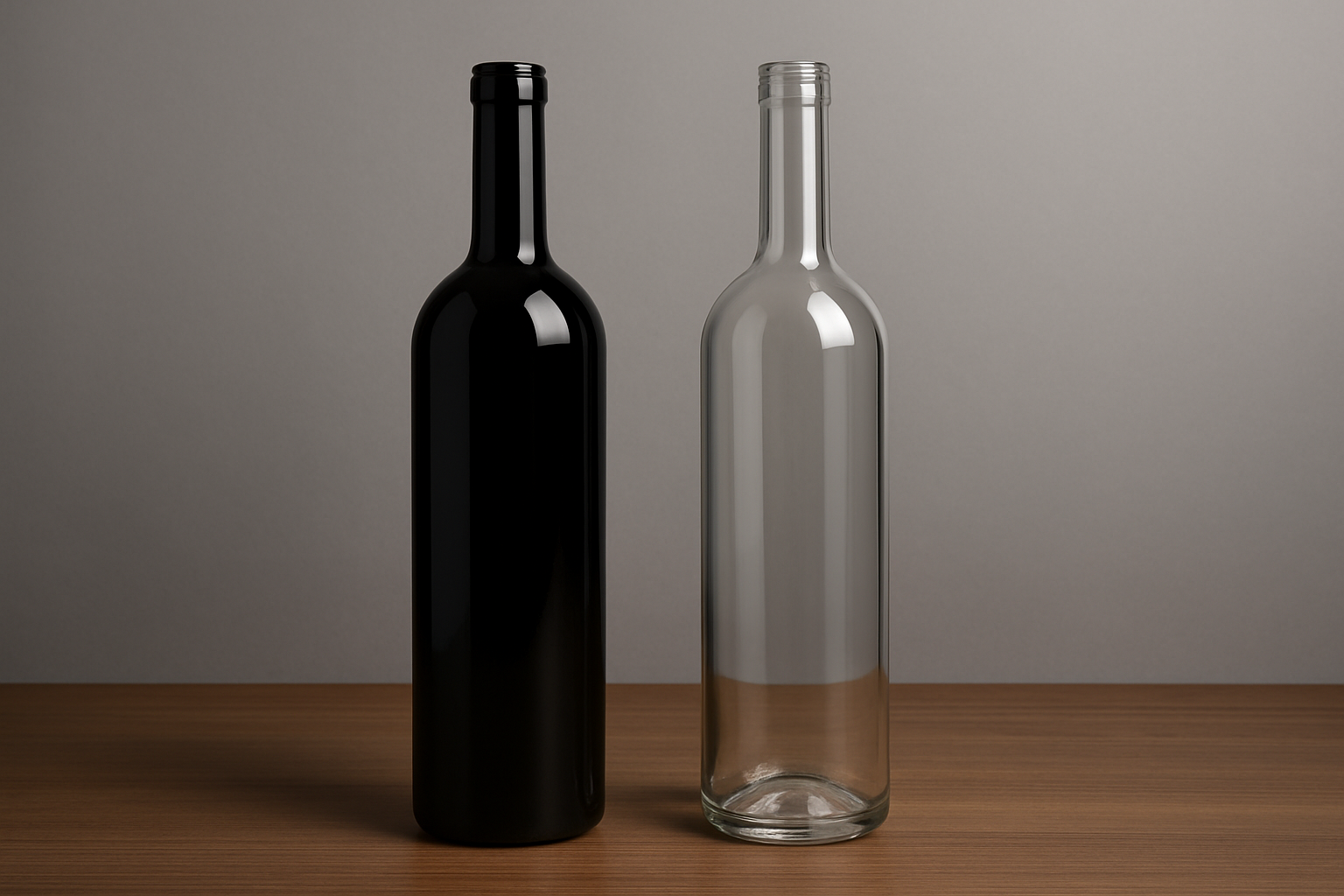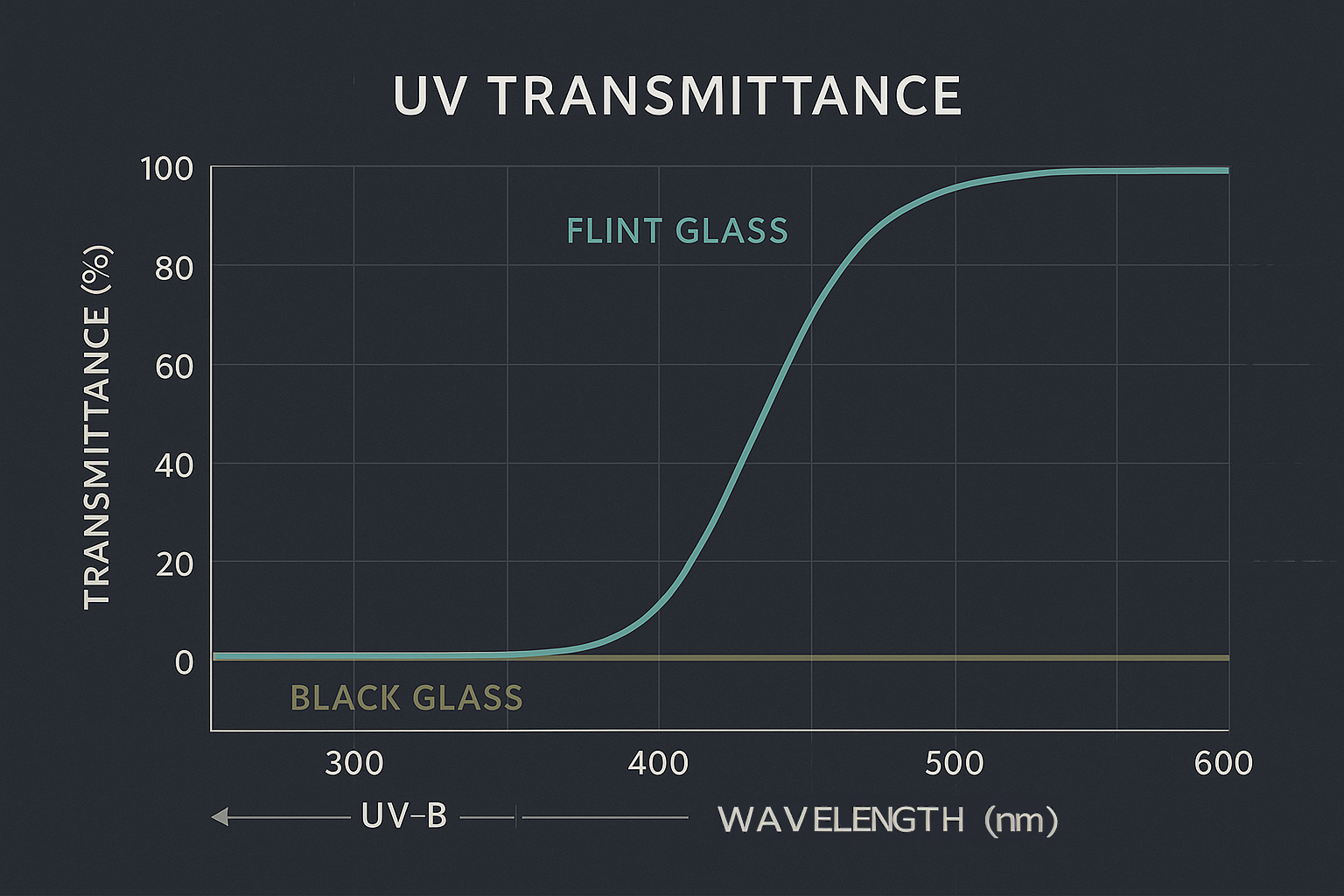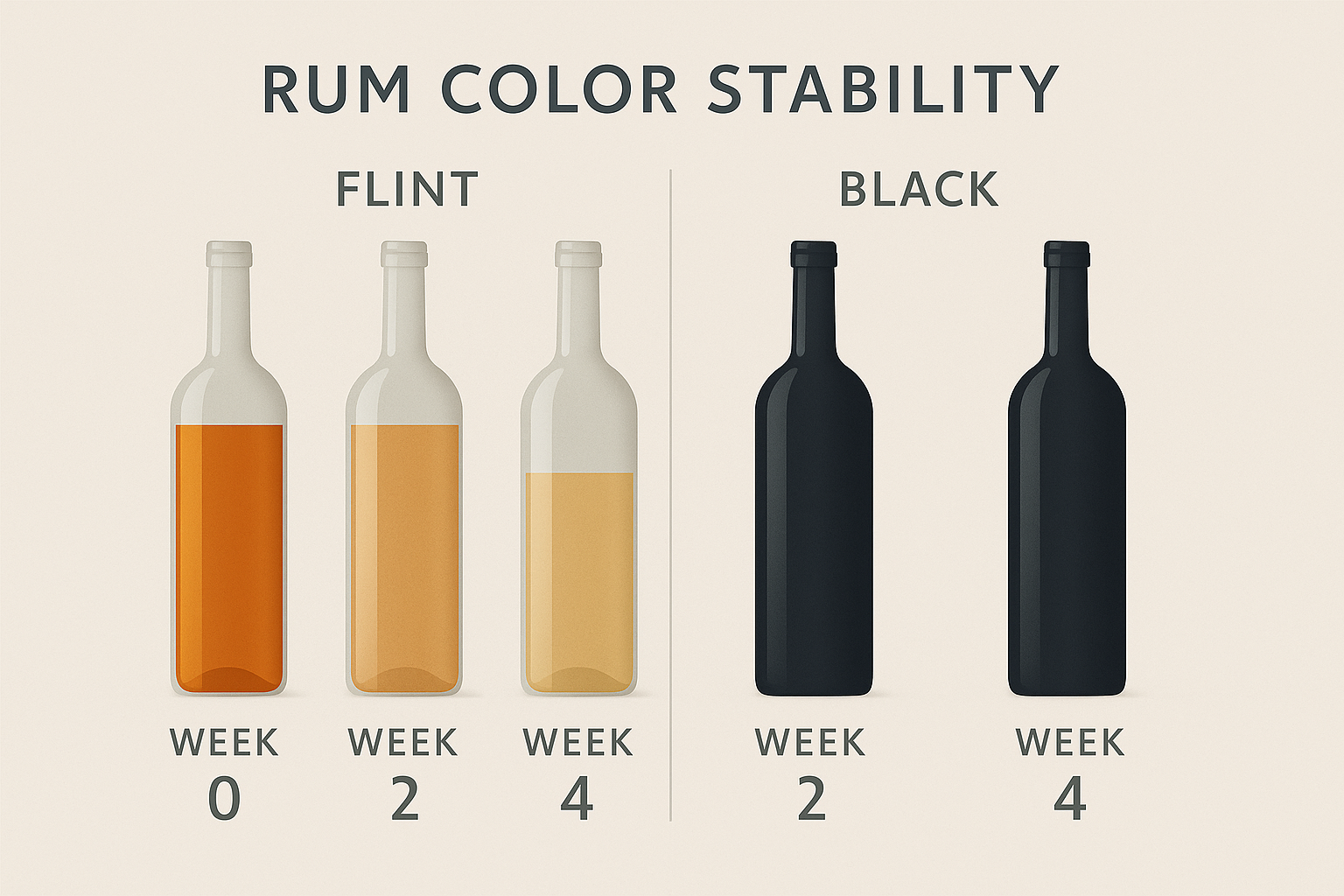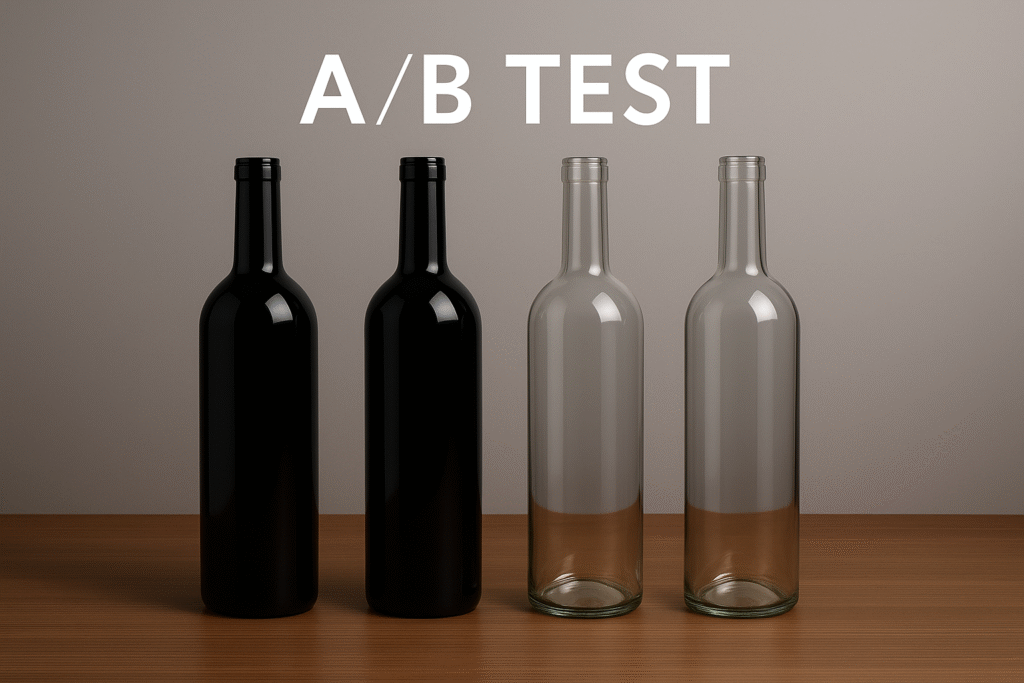Black vs Super Flint Glass: Material Impact by Beverage Type
You’re choosing between black and flint. The key isn’t how it looks today, but how your customers will smell and see it three months from now. We craft spirits bottles every day, and different glass materials have vastly different effects on spirits. This article will focus on how bottle color affects different spirits—their aroma, color, and stability.

What light really does
Clear flint lets in UV–violet–blue light. That spectrum nudges reactions in the liquid. Terpenes lose their sparkle. Plant pigments drift. In wine-based products, light can flip sulfur pathways in hours. Black glass blocks almost all of that. Amber cuts it sharply. Flint does not. That’s the whole physics in one paragraph.

How it plays out by category
Vodka
Because the spirit is neutral, colorless, and high-ABV, light has little to degrade. If you want the crystal look, flint is the right call; black won’t change the liquid—only the vibe. We reserve black for long, bright displays where extra light control and a moodier, premium signal matter.
Gin & Botanical Spirits
Your nose picks up the aromas of wine on first sip—Linalool, limonene, that hint of green—and these molecules hate UV/blue light. Flint glass bottles will fade faster under shelf LED lighting; dark glass bottles can help the aroma last longer if the bottles sit in sunlight for weeks. If your chain operates in a dark environment with fast turnover, flint glass bottles can still work—ship in cartons, avoid windows, and consider using UV-resistant labels.
Tequila & Mezcal
Blanco is dominated by delicate agave aromas, while Reposado and Añejo are spiced with vanilla and wood notes from the barrel. While light may dim both over time, their nuances remain. For high-end bottles designed for long-term, bright display, black glass bottles protect the bottle while highlighting its premium quality. For Blancos shipped quickly and stored primarily in cartons, flint glass bottles offer a crystal-clear appearance, creating an excellent effect.
Rum
White rum is like vodka—low light risk, so flint bottles are fine. Dark or spiced rums are different: their color often comes from barrel extractives or caramel and can wash out under bright retail lighting. If that golden tone is part of your promise, choose black glass to help it hold; with flint, commit to darker storage and faster turns.
Whisky/Brandy
Phenols and lactones in whiskey and brandy often lend a caramel hue. They’re less light-sensitive than wine, but not immune—bottles parked under bright beams for months can lose luster and drift in color. For high-end SKUs staged in long, bright displays, black glass is the safer bet; for dim programs or fast-turn bars, flint keeps the crystal look and works well.
Herbal Liqueurs & Amari
Herbal liqueurs and amari take their color from chlorophyll and plant pigments and their lift from terpenes—both are light-sensitive. If your bottles will spend time on shelf or under LEDs, black glass protects color and aroma and delivers strong value. Choose flint only when logistics are tightly light-controlled—boxed transit, dark storage, and quick turns.
Vermouth & Wine-Based Aperitifs
Vermouth and wine-based aperitifs are among the most light-sensitive wines. In flint, whites and rosés can pick up “lightstruck” notes quickly—especially under LEDs. If quality is the priority, spec black glass for lit displays or, at minimum, amber; reserve flint only for tightly light-controlled logistics and fast turns.
A quick way to prove it on your own line
Conduct a simple shelf lighting A/B test. Take 12 identical bottles from the same batch, using identical caps—six in flint bottles and six in black bottles. Store three of the bottles under store-grade LED lighting for a month, while the remaining three bottles are kept in the dark as a control. Record the wine’s color delta-E weekly and take a quick sniff of the key aromas. If the flint bottle’s color deviates from the dark control, the wine is in need of a rebottle; otherwise, enjoy the crystal-clear, sparkling wine of your flint glass bottle.

Two simple scenarios
A small-batch, bar-first gin. In flint, the bottle looked gorgeous, but the venue’s heavy uplighting took a toll. By week four, an open bottle near a fixture had lost its citrus lift. We moved the flagship to black glass; stability complaints disappeared, and the label read cleaner against the dark ground—proof that when light is part of the theater, black glass protects aroma and amplifies shelf impact.
Premium dark rum, travel retail. The dark liquid fades with the seasons under the LED lighting of the cabinet. The black glass bottle provides a visual cue; brand photography is also simplified—no retouching is required to maintain a consistent amber color.t.
So, which glass should you pick?
- If your liquor is terpene- or plant-based (gin, amaro, vermouth): Unless you guarantee a dark bottle, opt for a black bottle.
- If the liquor is neutral and colorless (vodka, white rum): Flint-colored bottles are a good choice; please choose according to the brand feeling.
- If the color of the liquor is part of the promise (aged tequila, dark rum, whiskey): black bottles protect the appearance; flint bottles require standardized logistics.
How we support as your manufacturer

We can ship A/B samples (Flint vs. Black), provide a simpleΔE + aroma worksheet, and adjust packaging specifications for display and dark chains. If you decide on a black bottle, we’ll help you select in-mold molding for optimal durability or a spray coating process for a specific finish, followed by adhesion/friction testing to ensure the bottle will last on actual shelves, not just in the lab.
